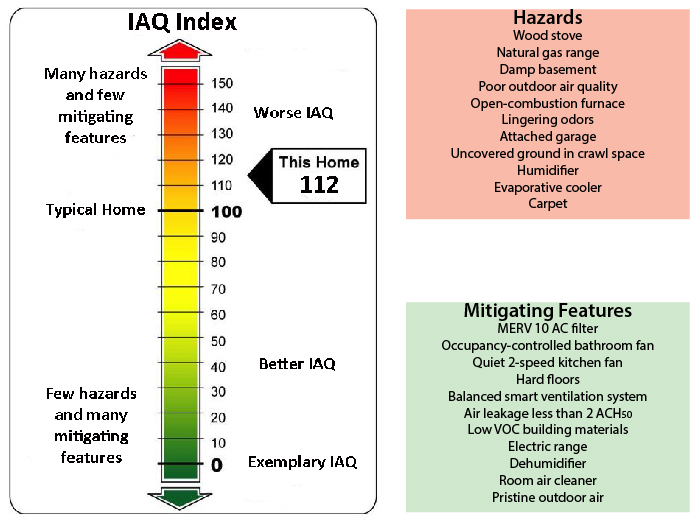Indoor air quality (IAQ) is of great value to homeowners, builders, energy auditors, and codes-and-standard bodies. The SVACH project is developing new IAQ metrics that will provide an easy-to-understand IAQ score.
Audiences for IAQ Metrics
IAQ metrics are for building-industry professionals, including energy raters and home inspectors. However, the index or score must be easy to understand for the general public. A single numerical score would be preferable. Discussions with builders indicate that they like the idea of a numerical score or rating. The IAQ score allows users to compare different homes in marketing strategies, get credit for a home with better IAQ, and to evaluate how best to invest in home upgrades. The IAQ score is analogous to the $/point exercise energy raters currently use for home energy ratings.
An important audience for IAQ metrics for existing homes is home appraisers. If the value of good IAQ ever becomes included in a home appraisal, the IAQ industry can educate homeowners to care about the indoor air they breath. A home appraisal rating would draw attention to important respiratory health and comfort issues. Appraisers report specific interest in IAQ-related issues such as: tobacco odors, pet odors, and signs of moisture damage. Therefore LBNL will promote these and other IAQ metrics for evaluating existing homes. Appraisers also report that it would be easier to discuss and value IAQ in homes if there were a rating system.
What new IAQ metrics will include
Among the most important goals of SVACH project is to include IAQ characteristics that are easy to observe and report. Those characteristics will emerge from the SVACH research and simplify the evaluation of IAQ. Among those characteristics are the following.
- One important IAQ-related characteristic is the asset rating, like the asset ratings of a home appraisal. Asset ratings include paint condition, number of bathrooms, and number of bedrooms. SVACH researchers are working on methods of valuing IAQ. The asset rating doesn’t consider the behavior of the current occupants but only the characteristics of the home itself.
- Another important IAQ -related characteristic is outdoor air quality. If the outdoor air is polluted, the home may need filtration and air-tightening to prevent outdoor air from polluting indoor air.
- A new IAQ score or index may need to consider that the indoor air quality within a home varies from one room to another. Therefore, the mitigation strategies for solving IAQ problems may need to vary room-to-room accordingly.
Further reading
“Indoor Air Quality in 24 California Residences Designed as High-Performance Homes.” (2015).